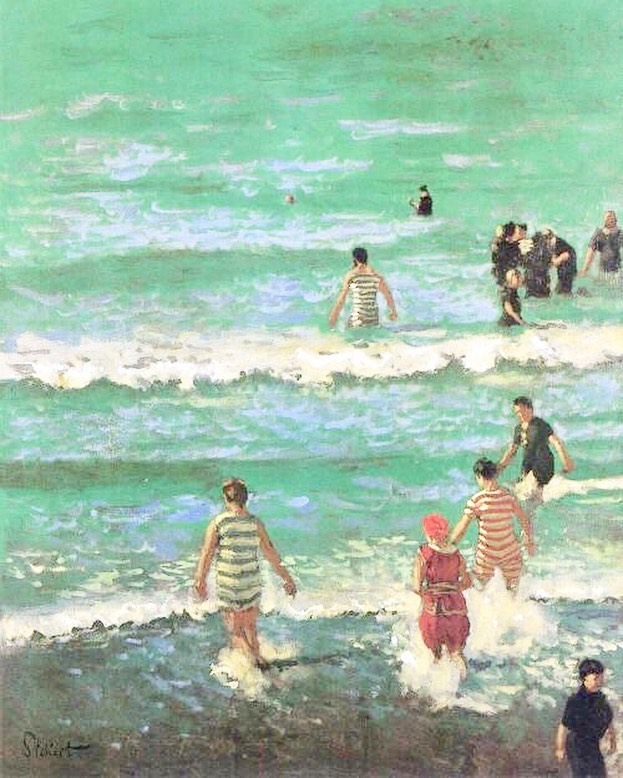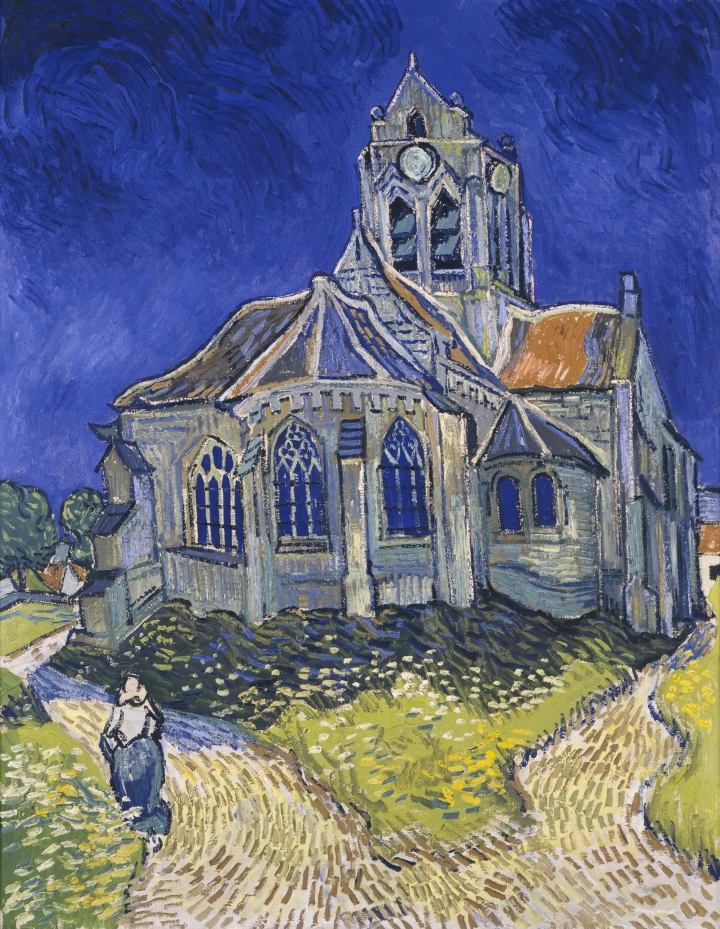Once again, students in my May mini-hybrid class chose paintings that appealed to them and then wrote haiku to accompany the paintings. This is an exercise in the interrelationships of the humanities, where one type of art form can interpret a previously completed work of art in a different medium. My students are neither artists nor poets per se, but I think their considered attempts to experience the ways in which works of art can inspire the creation of new works are worthy of publication here.
Just a reminder for anyone who, like me, attended high school too long ago to remember clearly, a haiku is a non-rhyming poem of three lines and seventeen syllables in this pattern: five syllables, seven syllables, and another five syllables. One challenge is to remember to think in syllables, rather than words.
Here are the paintings chosen by my students and the poems they created in response to their choices.
Bathers, Dieppe, by Walter Richard Sickert (1902)

“Bathers,” by Hannah Rains
Bathing at the beach.
Summer breeze blows as they wade
in up to their knees.
The Last Supper, by Tintoretto (1594)

“The Last Supper,” by Carol James
He then broke the bread
so they would never forget:
The death of the King.
Suspense, by Charles Burton Barber (1894)

“Breakfast,” by Cynthia Russell
We must say our prayers,
for thankful friends we should be.
But don’t close your eyes!
The Church at Auvers-sur-Oise, by Vincent van Gogh (1890)

“Deep Inside,” by Whitney Paschal
A beacon of hope –
Violet-hued glass and sky.
Look inside for Him.